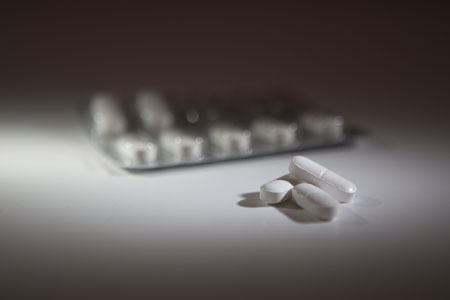Modafinil Addiction Treatment
The treatment of sleep disorders such as narcolepsy often includes the medication modafinil. However, this is a drug that you might have heard of if you are trying to overcome a cocaine dependence. Modafinil is sometimes used to help reduce cocaine cravings and to promote abstinence. Read on to find out more about this drug.
What is Modafinil?
Modafinil is primarily used for the treatment of sleep disorders such as narcolepsy and sleep apnoea because it is a medication that promotes wakefulness. It was also tested to determine its efficacy in treating cocaine addiction. Results showed that when combined with a detox and rehabilitation programme that included behavioural therapy, modafinil increased the number of days that patients did not use cocaine while it also proved effective with reducing cravings for the drug.

Modafinil has also been used by the armed forces of many countries, including the US and France. Due to its ability to keep patients awake for longer periods of time, it has been utilised off-label in situations where serving personnel might face sleep deprivation.
Brand Names
- Provigil
- Aspendos
- Alertec
- Mentix
- Modanil
- Forcilin
- Resotyl
- Modiodal
- Stavigile
- Vigil
- Vigicer
- Zalux
History of Modafinil
In the late 1970s, Michel Jouvet, who was working for Lafron Laboratories in France, began working on developing a stimulant drug to replace amphetamines, which were considered at the time to have too many side effects. The drug adrafinil was developed as a treatment for narcolepsy, but because it needed to be metabolised by the body before it could act as a stimulant, it took a long time to have an effect.
After more research, the scientists started to work on the primary metabolite of adrafinil and subsequently marketed it as modafinil. They realised that this was a much faster-acting drug and would be more effective in treating sleep disorders. In addition, it was less likely to have an impact on the liver in the same way that adrafinil did.
In 1994, modafinil was widely prescribed in France for the treatment of sleep disorders. A year later, in 1993, the rights to market the drug were leased to the American drug company Cephalon. In 1998, the US FDA approved modafinil for use in the treatment of narcolepsy and obstructive sleep disorder. It was marketed under the name of Provigil. In December 2002, modafinil was approved for use in the UK.
What Substance Abuse/Addictions Is Modafinil Used to Treat?
- Cocaine Addiction (off-label)
Is Modafinil Addictive?
Modafinil is not considered to be an addictive drug because there is an absence of euphoric or pleasurable effects, but there has been some evidence to suggest that the drug might be prone to abuse. This was ascertained with research by a team of scientists led by Dr Nora D. Volkow, who reported the potential for abuse.
Their research found that modafinil could affect dopamine centres of the brain in the same way that drugs such as amphetamines, methamphetamines, and cocaine could. As with other prescription medications, there is a risk that tolerance for the drug could build, causing users to seek more of it to achieve the desired effect. This, therefore, increased the risk of dependence and addiction.
Call our admissions line 24 hours a day to get help.
What Is the Mechanism of Action?
The exact mechanism of action of modafinil is not known, but it is believed that it stimulates the production of neurotransmitters such as serotonin, dopamine, and noradrenaline. It is thought that modafinil also inhibits the reuptake of dopamine in the brain, therefore improving mood and cognitive function.
How Long Does It Take for Modafinil to Work?
Modafinil typically takes around one to two hours to have an effect, and the effects can then last between twelve and fifteen hours.
Does Modafinil Have Any Interactions?
Modafinil is known to interact with 548 drugs. Of this, 70 can cause a major interaction, 241 can cause a moderate interaction and 237 can cause a minor interaction.
As stimulant drugs, such as modafinil, are known to increase blood pressure, there may be an interaction in patients with severe hypertension. Use of modafinil in patients with severe hypotension, therefore, should be avoided.
Caution should also be taken when administering modafinil in patients with the following illnesses due to the risk of interaction:
- Liver disease
- Kidney dysfunction
- Seizure disorders
- Cardiac disease
- Psychiatric disorders
Should Any Precautions Be Taken?
There is a risk that modafinil can cause severe skin reactions that require hospital treatment. If you have suffered from a rash previously when taking modafinil or armodafinil, you should avoid this medication. If you develop a skin rash, blisters, hives, or peeling skin, you should stop taking modafinil immediately and seek medical attention.
As there are a number of drugs that can interact with modafinil, it is important that you speak to your doctor about any medication you are taking. This includes over-the-counter medication, birth control pills, vitamin supplements, herbal products, and prescription drugs.
If you have ever suffered from any of the following, you should inform your doctor to ensure this medication is safe for you:
- Kidney disease
- Liver problems such as cirrhosis
- Angina
- Heart attack
- Stroke
- Heart disease
- High blood pressure
- Alcohol or drug addiction
- A history of mental health problems
It is important to inform your doctor if you are pregnant or planning to become pregnant before you take modafinil as it is not known if this drug will harm an unborn baby. If you become pregnant while taking modafinil, speak to your doctor immediately.
It is not known if modafinil can pass to a nursing baby through breast milk. If you are breastfeeding your baby, speak to a doctor before taking this medication.

As modafinil can reduce the effectiveness of certain birth-control methods, such as implants, pills, vaginal rings, skin patches and injections, it is important to take extra precautions while on the medication.
What Are the Side Effects of Modafinil?
There are a number of commonly reported side effects associated with modafinil use. These include:
- Nausea
- Headaches
- Anxiety
- Nervousness
It is unlikely that these symptoms will require medical attention and they should pass when your body adjusts to the medication. Below are some of the less common side effects:
- Backaches
- Diarrhoea
- Indigestion
- Heartburn
- Loss of appetite
- Stomach ache
- Vomiting
- Chest pain
- Confusion
- Tremors
- Dizziness
If you suffer severe symptoms or if they persist, speak to your doctor. If you notice signs of an allergic reaction, you should seek emergency medical attention. Symptoms of an allergic reaction include:
- Rash
- Hives
- Swelling of the mouth, lips, throat, face, or tongue
- Difficulty breathing
Can You Just Stop Taking Modafinil?

There may be some noticeable symptoms associated with modafinil withdrawal, but this typically depends on how long you have been using the drug. Some people notice an increase in fatigue when they stop taking modafinil while others do not have any significant withdrawal symptoms. If you have been taking modafinil for a long time, it is recommended that you taper your dose over the course of a few weeks before completely stopping it.
Facts/Statistics
- Modafinil is said to be therapeutic in terms of alleviating stimulant withdrawal symptoms in cocaine addicts.
- Due to its lower propensity for pleasure and euphoria, modafinil can be safely used to treat cocaine withdrawal.
- Modafinil is often referred to as a ‘smart drug’ because of its ability to improve cognitive function. It is therefore regularly used by students who need to stay awake and concentrate.
- In the UK it is illegal to sell modafinil without a prescription.
Call our admissions line 24 hours a day to get help.

